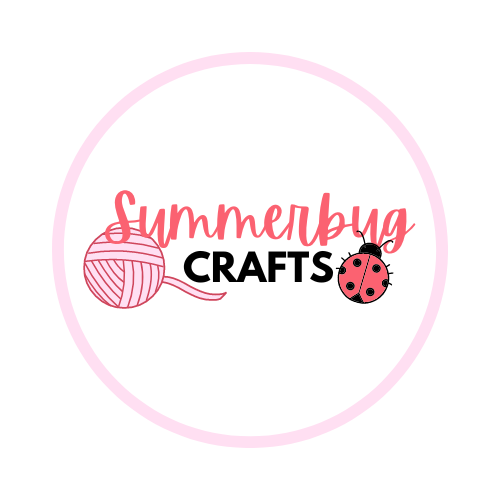Amigurumi Tools
Crochet is just yarn and hooks, right? Amigurumi uses a lot more than that. Find out the basic amigurumi tools you need to get started.
Hi everyone!
What do you need to make amigurumi? When crocheting amigurumi, you need more tools than you would use for a regular crochet project. This means you’re going to need a big tote bag. Amigurumi tools include notions, yarn, fabric, the right crochet hook, and more based on what amigurumi you’re trying to make.
Clicking on certain links may result in a small commission for me at no extra cost to you. Money generated from this allows me to continue to design and post cute amigurumi patterns for you all!
Tools Needed to Make Amigurumi
Stuffing (Polyfil):
You’d be surprised by how quickly you go through stuffing! I recommend purchasing large bags of stuffing. If you like to carry your tools with you so you can crochet on the go, I recommend splitting your polyfill into smaller bags. That way it will fit in your tote when you leave the house for the day!
Safety Eyes:
I suggest keeping a wide range of safety eyes on hand! Amazon has a great bundle of various sizes for a great price. If you look on Etsy, you might find different shapes and styles. My favorite shop for this is AdoraEyes. Safety eyes are perfect for toys as buttons pose a huge choking hazard. That’s not to say that you can only use safety eyes. You can also create eyes for your amigurumi with felt and embroidery techniques. It all depends on the look you’re going for.
Stitch Markers:
You will need to use stitch markers. When I first started crocheting amigurumi, I foolishly thought I could count along with the number of stitches for each round. Because amigurumi is stitched in the round, there is no joining and starting a new round with an ss and a ch (unless otherwise stated). If you lose stitch count, the whole project is a write-off. This is where stitch markers come in. Place your stitch marker at the beginning of every round to never lose track again! I suggest having an abundance of these around.
Row Counter:
A row counter will save your life. Row counters will keep your place in the pattern. With rounds blending, how are you supposed to know if you’re on row 15 or 16? Get a row counter. You can purchase whatever row counter works best for you. Amazon has both manual and digital row counters. I prefer digital counters. The “click” of the manual row counter drives me insane. I honestly don’t know where I would be without my Susan Bates digital row counter.
Embroidery Thread:
Embroidery thread can be used for eyelashes, cheeks, and other facial features. This material is relatively cheap, comes in many colors, and is easy to buy in bulk. Sewing on faces with the thread can be a bit of an art form, but don’t worry. YouTube and some Instagram users offer tutorials on how to thread facial features.
Felt:
Keep various colors of felt sheets in your stash with fabric glue. Felt is great for that kawaii anime look, especially when crocheting Pokémon. Felt is cheap and usually goes for 50 cents a sheet, and bulk packs can be purchased from the dollar store. Fabric glue is generally inexpensive.
Small Crochet Hooks:
Smaller gauge hooks are better for amigurumi. With amigurumi, you want tight stitches so you can’t see the stuffing. I don’t recommend going any higher than 4.00mm for amigurumi worked with worsted-weight unless you are working with chunky yarn. I suggest ergonomic hooks like Furls Crochet when making amigurumi. The tighter tension can cause hand and wrist cramps.
Sewing Pins:
Sewing pins can be optional. You can even use sewing pins to map out where you’d like to place your facial features or to keep limbs in place while sewing.
Scissors:
I feel like this one goes without saying, but I also feel like we forget about them a lot. We need scissors. The yarn, floss, and felt aren’t going to cut themselves! I take my tiny unicorn scissors with me everywhere. Not only are they perfect for pictures for Instagram, but their size fits in any bag.
Darning Needles:
Use these darning needles to weave in your ends and to sew your amigurumi together. Darning needles are larger than regular sewing needles to fit your yarn through the eye. Buy a pack of darning needles in multiple sizes. Purchase the metal ones if you can. Plastic needles bend and break too easily.
Tote Bag:
You need a big one to keep all your amigurumi tools together, especially if you want to take your crochet on the go with you. I improved my crochet game by taking my projects with me everywhere.
Safety Eyes Insertion Tool:
Sometimes attaching the back to your safety eye can be a tedious process. A lot of the time, I hurt my fingers trying to get them on. I purchased a safety eye insertion tool. It makes safety eye attachment quick and painless!
Pipe Cleaners:
If you want to create an amigurumi with movement and shaping, use pipe cleaners! Insert a pipe cleaner into limbs instead of stuffing to make your plushies poseable. I used this method in my Pikmin crochet patterns.
Wire Pet Brush:
Use a wire pet brush on a finished amigurumi made with acrylic yarn to make it look fluffy and soft.
These are the amigurumi tools I use most when making amigurumi. I suggest at least purchasing the basics before you try and crochet one. There are plenty of beginner amigurumi patterns, including some on my website for free!




